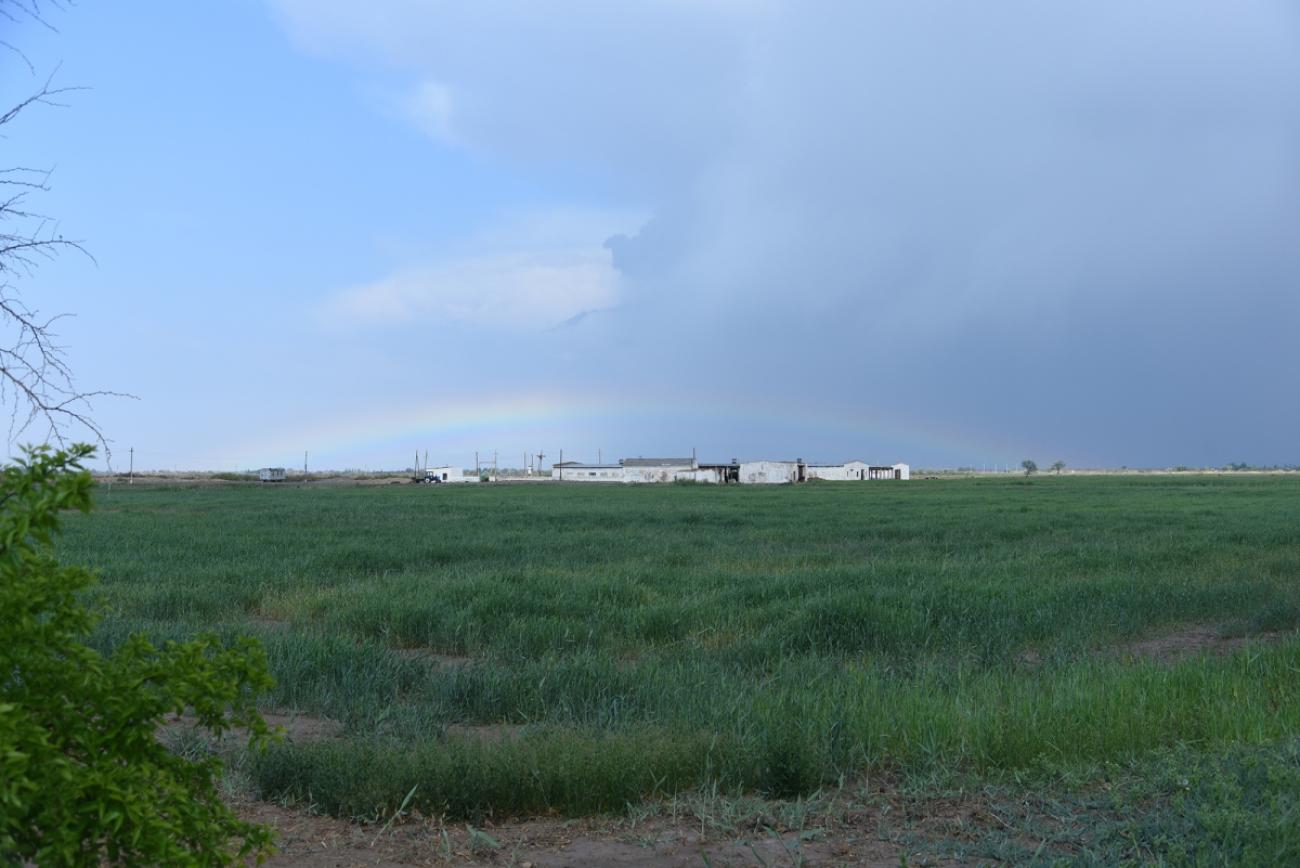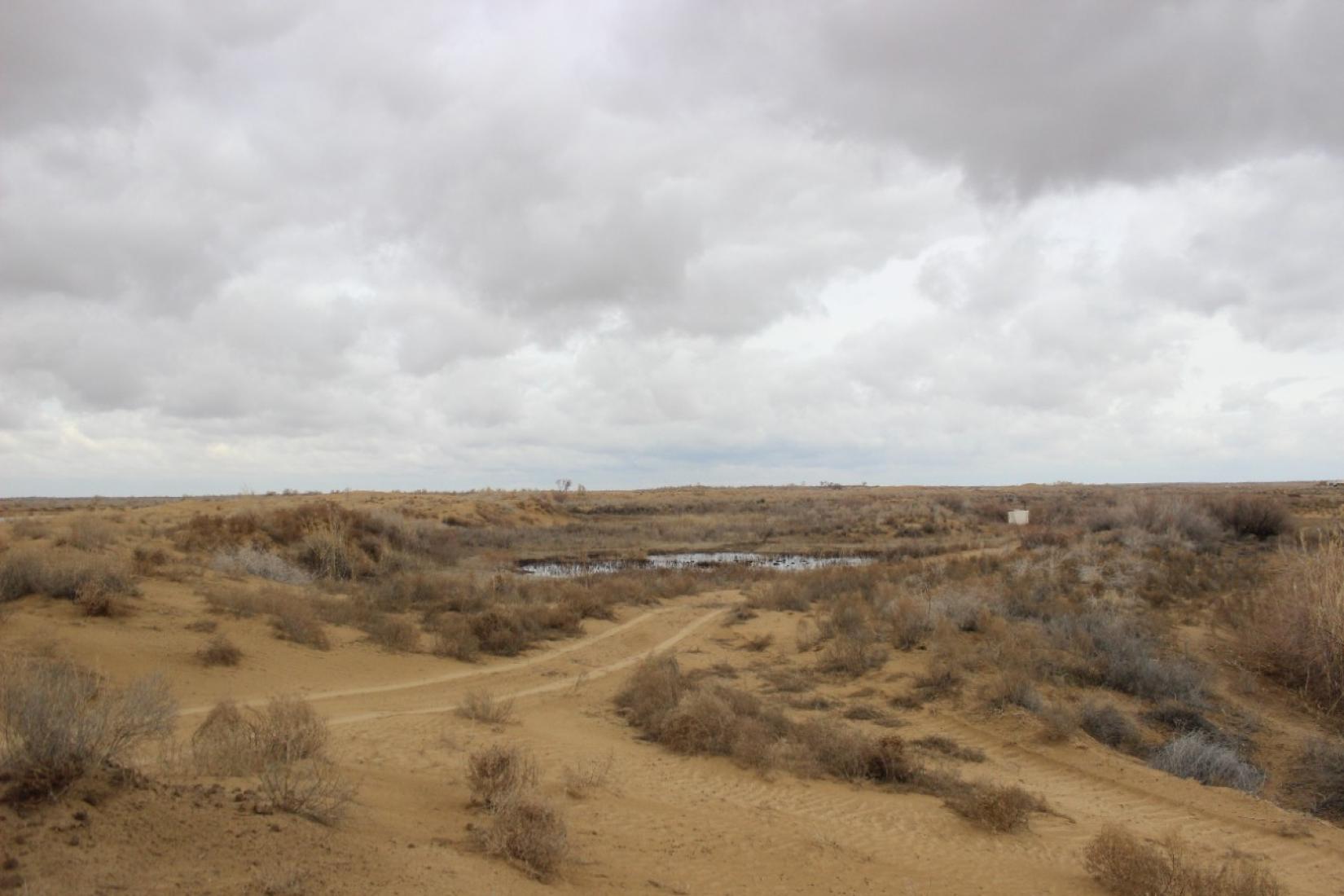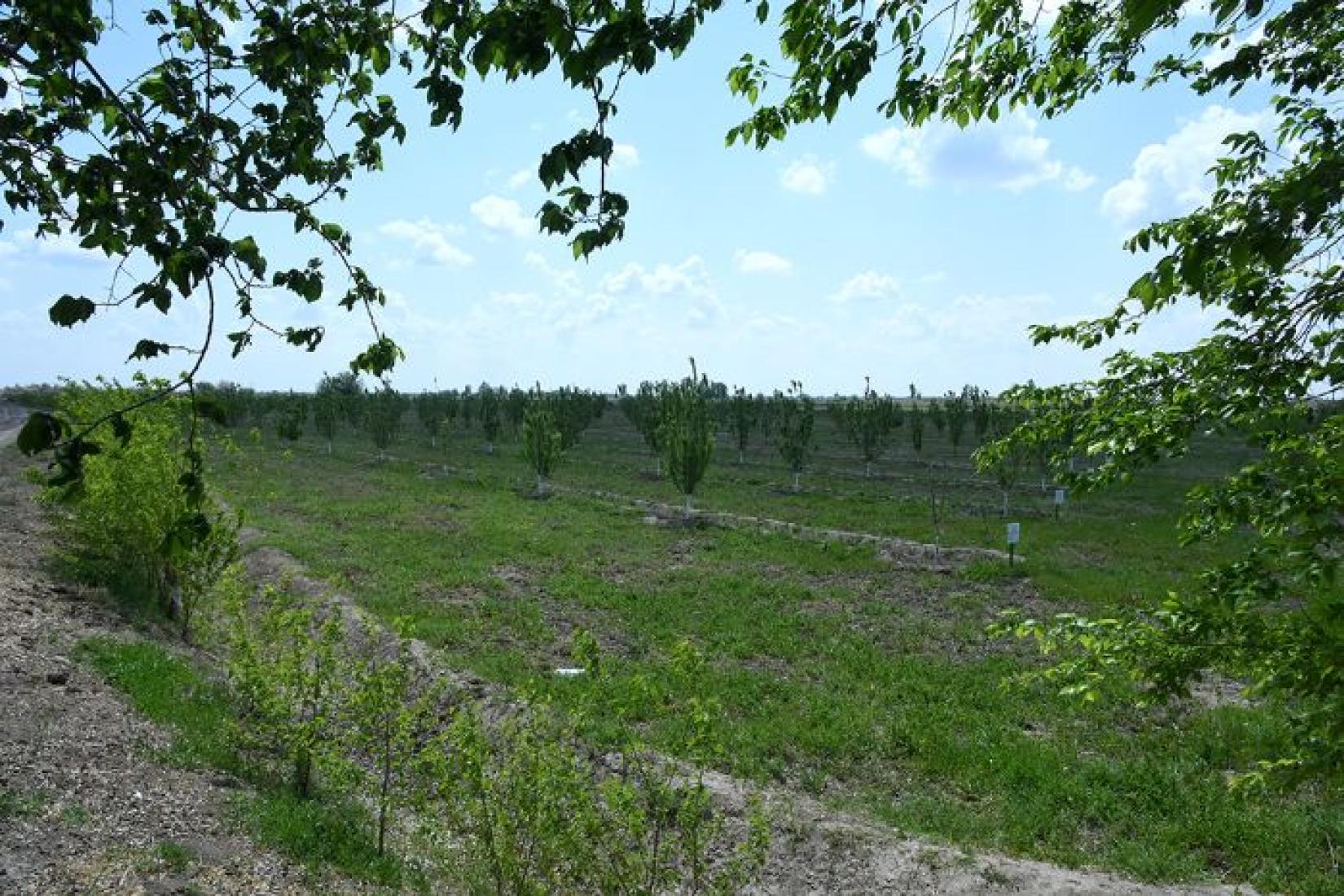Empowering local action against the climate change

The beginning of 2019 has been very rainy in Dashoguz region of Turkmenistan with over 33 mm of rain falling down in January 2019.
The Amudarya River is full of water now, cotton and wheat produce promise a good yield this year. Unfortunately, this year was an exception. Low precipitation throughout the last decade has led to drought, salinization, desertification and significant reduction of crops collected from each hectare. As a result, local farmers and cattle breeders suffer from the reduced income and had to look for alternative sources of livelihood, thus abandoning traditional zones of economic activities and moving away.
Having witnessed, and analyzed the challenges extensively, UNDP joined forces with the Global Environmental Facility (GEF) to offer the local communities sound alternatives for moderating the impact of the climate change on their lives.

When we arrived there for the first time in 2017, we saw swampy farmlands, little green, dried trees and sparse islands of cotton and wheat growing in the fields that used to be fertile before.
“I am a farmer for the last 37 years. Gradually, farming became more and more difficult in the past 10 years. The soil is dry and salty, water levels rise, it became extremely hard to keep up the amount of yield that we need to grow,” tells Dadebay, local farmer. “In the good year, a farmer can harvest around 18-20 centers of cotton from 1 ha. When the weather conditions are bad, we receive roughly 10 centers from 1 ha.”
Two years on, we are coming back to Dashoguz to witness a different story. Local residents started growing vegetables and fruit trees in their front gardens and territory around houses, the fields are green with wheat that will be ready by September, some meadows will soon turn green as the cotton seeds have recently been planted. Many residents now have cattle that gives milk and enables them to produce yoghurt and other dairy products that they sell at the local market.
What has caused the change?
UNDP-GEF project “Supporting climate resilient livelihoods in agricultural communities in drought-prone areas of Turkmenistan” started its activities in 2017 in the Dashoguz region in Yagtylyk farm association and Garagum cattle breeding farm of Gorogly district. Yagtylyk is comprised of eight villages with the total amount of roughly 3000 hectares of land used for sowing wheat and cotton. Garagum is comprised of three villages located in remote desert area with territory of pastureland of more than 880 the ha and arable land of nearly 100 ha.
It all started by getting it all better, getting to know local communities, local stakeholders and internalizing their problems. It was all built around mobilizing local knowledge, experience and power for empowering the communities to address their problems themselves.
Formal and informal community leaders (UNDP Turkmenistan/Photo 5) played a decisive role in creating bridges of confidence between UNDP team and the local farmers. Once the mutual trust was built, the full-scale operations unfolded.
Together with the local communities, the teams have come up with the support package, comprising of what were considered the game-changers - local capacity development, along with the infrustructure restoration. Accordinly, UNDP has created local consultation centers with the capacity to reach to local farmers and explain the most suitable response to the emerging challenges. In parralel, UNDP and the local communities have identified the local infrustructure restoration initiatives with the highest impact.
As a result:
1. The 30 km long drainage canal has been cleaned up
2. 6 water regulating devices have been installed
3. Land leveling at 25 ha of farming land has been conducted
4. Pumps, a transformer and power lines were installed for more than 2 km for pumping drainage water from the irrigated area of the Garagum cattle breeding farm to the main collector
Over 100 farmers have received consultations on the modern farming and irrigation techniques through the regular dialogue and so-called field days , when the local farmers, academics and specialists from the local organizations discussed the principles of the rational use of water and soil.
“I have joined the programme because I want to make my land fertile again. I have 1.5 ha and if things work out well, we are going to get 20-25 center / 1 ha of wheat. At the recommendation of the project, I have now sowed soy beans which should help my soil to restore and will also sell the harvest to the farmer who has a cattle farm,” explains Dadebay.

These measures help reduce the levels of underground water and salinity levels. The project also ensured efficient and fair distribution of the water resources. As a result, residents of the local villages can now pursue the traditional farming of cotton and wheat, and at the same time plant vegetables and fruit trees and sell their products. This creates opportunities to receiving alternative income for a household. To develop the economic conditions, farmers are searching for a co-financing opportunity to create a greenhouse.
“I have joined the programme because I want to make my land fertile again. I have 1.5 ha and if things work out well, we are going to get 20-25 center / 1 ha of wheat. At the recommendation of the project, I have now sowed soy beans which should help my soil to restore and will also sell the harvest to the farmer who has a cattle farm,” explains Dadebay.
These measures help reduce the levels of underground water and salinity levels. The project also ensured efficient and fair distribution of the water resources. As a result, residents of the local villages can now pursue the traditional farming of cotton and wheat, and at the same time plant vegetables and fruit trees and sell their products. This creates opportunities to receiving alternative income for a household. To develop the economic conditions, farmers are searching for a co-financing opportunity to create a greenhouse.
To further strengthen the local capacity to address the climate change challenges in the surroundings in a sustainable, systematic way and beyond the completion of our project, UNDP has established a partnership with the State Agriculture institute based in Dashoguz supporting the research for farming and cattle breeding.
The Agricultural institute raises the scientific potential of the academics and its 1200 students. The institute has initiated the use of the liquid fertilizers through the dripping irrigation system, uses meteo stations to predict weather conditions and lends its equipment to the farmers.
“Our institute introduces new technologies for the region. Right now, we are testing the dripping irrigation method for fruit trees. With support of the project, we have purchased the equipment and conduct a research into the trees of the third and fourth year on various soils, including clay and sandy soil. We often get inquires from the local farmers and are happy to share our knowledge,” explains Aynabat Atayeva, teacher of the Agricultural Institute.
In the future, the Institute should serve as the basis for the information centre in the city of Dashoguz to distribute the information about sustainable farming and cattle breeding practices and the methods of adaptation to the climate change conditions.
Our work in the region paves the way for mitigating the climate change effect on local farmers, caused by decades of unsustainable consumption of the natural resources and pressure on the agricultural sector. We support the regions to embark on good practices of water and land use, introduce new technologies and innovation, adopt sustainable, responsible and smart ways of resource management to address the existing challenges and minimize the risks of the similar in the future.




